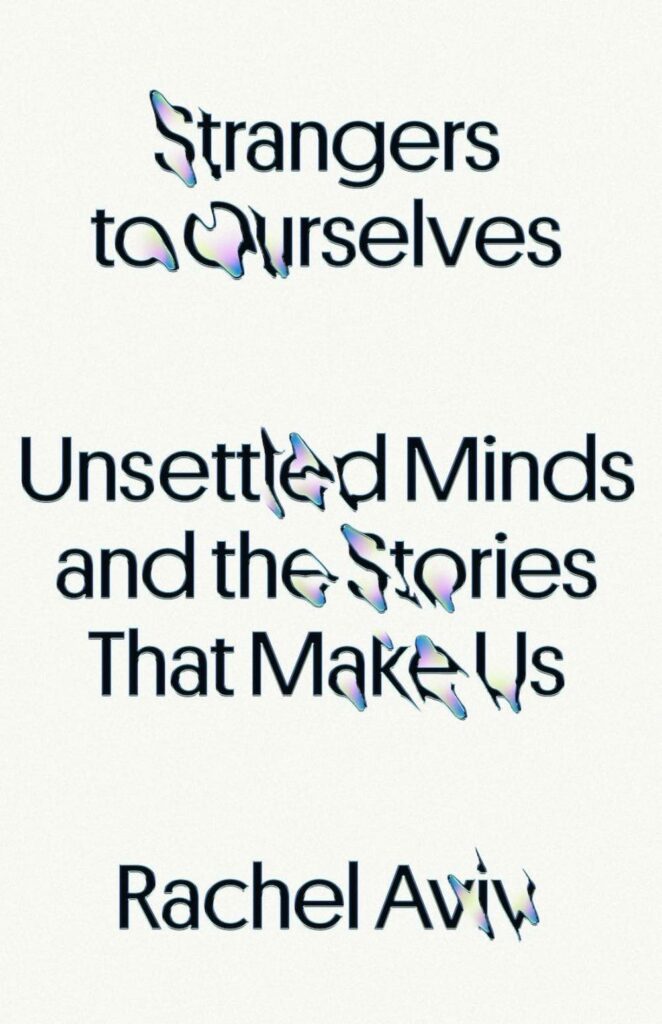By Elizabeth Svoboda
Undark Magazine.

At 6 years old, Rachel Aviv entered the hospital because she refused to eat. Six weeks later, her doctors discharged her, and she went on to have a mostly normal childhood.
But decades on, her sojourn through the mental health treatment universe continued to haunt her. Her doctors had given her illness a label, anorexia, and doubted that she would ever recover. “We are extremely guarded regarding the prognosis,” one wrote at the time.
Aviv — now a staff writer for The New Yorker — defied their predictions, resuming a normal diet as if she’d never stopped. Yet as others she’d met in treatment grew sicker, Aviv contemplated her own close brush with the same fate. In “Strangers to Ourselves: Unsettled Minds and the Stories That Make Us,” Aviv blends memoir and rigorous reporting to explore how the stories we use to explain mental distress shape the course of our lives: toward flourishing, on the one hand, or precipitous decline on the other. “These stories alter people’s lives, sometimes in unpredictable ways,” Aviv writes, “and bear heavily on a person’s sense of self — and the desire to be treated at all.”
Central to Aviv’s thesis is the idea that culture supplies the dominant framing people use to understand mental illness. The prevailing Western view states that diagnoses are objective, more or less permanent, and that illness symptoms are often out of a person’s control.
Yet Aviv’s reporting shows how such pathology-centered framing sometimes stymies those in its thrall — as in the case of Laura Delano. Starting in her teen years, Delano’s doctors told her that her bipolar disorder was brain-based and would have to be managed indefinitely. Medication seemed to help for a while. Then one prescription led to another, and Delano ended up with fistfuls of pills, not much symptom improvement, and a constricted view of her own capacities. “She interpreted each disappointment as the start of a black mood that would never end. She seemed to be caught in a loop,” Aviv writes. “The diagnosis reflected her state of mind, but it also influenced her expectations for herself.” It was only after Laura jettisoned some of her medications — and her view of herself as defective — that she became more stable and confident. Though she acknowledged that she still likely met technical criteria for various disorders, she had rejected the notion that any diagnosis could define who she was.
What’s most corrosive, Aviv argues, is when an identity based on illness mushrooms to encompass all aspects of life. When Aviv entered the hospital at age 6, she met two older patients, Hava and Carrie, who’d turned their anorexia diagnoses into an all-consuming lifestyle. They monitored their weights down to the ounce, did jumping jacks to avoid sitting, and paced the halls endlessly when the nurses weren’t looking. And they did all this in front of Aviv, encouraging her to follow suit.
But Aviv traces her own turning point to her rejection of her doctors’ and peers’ framing — that she was sick in a lasting way, and that her diagnosis dictated who she would become. She was less driven than older peers to achieve a certain body ideal, so one factor in her recovery may have been that thinness didn’t have the same allure for her. At the hospital, finishing meals so her parents could visit motivated her more than winning skinniness contests. “I was ‘recruited’ for anorexia,” she reflects, citing the terms of historian Joan Jacobs Brumberg, “but the illness never became a ‘career.’ It didn’t provide the language with which I came to understand myself.” For Aviv, what the philosopher Ian Hacking calls “the space of possibilities for personhood” had not yet been constrained.
This space of possibilities, Aviv writes, can be enlarged when people see themselves filling key social roles despite illness. In her profile of Bapu, an Indian woman who heard voices calling her to religious devotion, personal agency fuels sustained improvement. Diagnosed with schizophrenia, Bapu initially deteriorated in a urine-smelling mental hospital. It was only when she moved in with her son and struck up a close friendship with her daughter-in-law that she began to flourish. Though she took some medication to control her delusions, she fundamentally saw herself as someone with hard-won insight others did not have, and she was happily ensconced among people who loved her. Soon, she established herself locally as a respected spiritual counselor.
Aviv credits her own healing to a similar kind of elasticity in her close community — a willingness to accommodate her mental difference without drawing undue attention to it, allowing her to grow into her unique gifts. After Aviv returned from the hospital as a child, “you kind of blended right back into the mix,” her first-grade teacher told her. “I just wanted you to feel that you were part of this community again.” That kind of acceptance gave Aviv room to create an identity outside her diagnosis, one where she blossomed as an artist. Her journey seems to accord with recent findings from the psychologist Talia Hashworth, who has linked feelings of agency to symptom recovery.
Crucially, though Aviv reveals the ways diagnostic labels can constrain, she does not deny the deep-rooted psychiatric differences that give rise to such labels. Her take is distinct from that of firebrands like Dr. Peter Breggin, who argues that mental illness has scant basis in biological reality — an idea that modern brain research contradicts. Describing her own adult bout with anxiety, Aviv shares how much better she felt on the SSRI Lexapro — how, when her worry lifted, she was able to think more flexibly about her writing work rather than chasing narrow, predetermined ideas: “It was as if previously I had been looking for something too constricted. The frame of my curiosity had widened.”
The most liberating thing about “Strangers to Ourselves,” in fact, is that it is not a book of clear-cut answers. Aviv shows how the stories we tell ourselves about illness influence our outcomes, but she doesn’t elevate distinct interpretations of illness, nor does she argue that choosing one story invalidates the rest. Many people, she writes, “are searching for the right scale of explanation — chemical, existential, cultural, economic, political — to understand a self in the world. But these different explanations are not mutually exclusive; sometimes all of them can be true.”
What Aviv champions, in the end, is a novel kind of mindfulness: a recognition of which frameworks we use to understand mental illness, and a search for frameworks that best serve who we want to become. “Labels aren’t so bad,” Hava wrote in her childhood journal. “They at least give you a title to live up to … and an identity!!!!” Hava never latched onto a story that allowed her to heal; the anorexic identity she created, steeped in beliefs about her own isolation and brokenness, led her ever deeper into illness. In laying bare the mechanics of this process, Aviv makes a powerful case for locating storylines that uplift and transform.
This article was originally published on Undark.
Read the original article.


